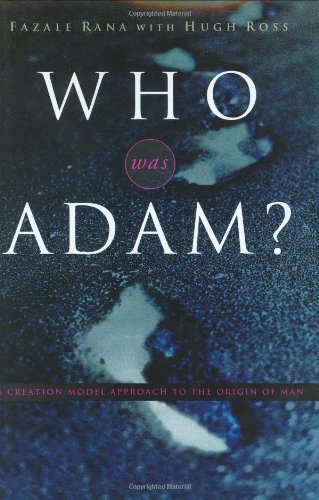 Beginning our religion coverage this week (a bit late), from Christian Post:
Beginning our religion coverage this week (a bit late), from Christian Post:
Ten years after publication of Who Was Adam? by Fazale Rana and Hugh Ross, 13 new chapters detail the new scientific evidence on the origins of humankind in a second edition.
Rana and Ross are scholars affiliated with Reasons to Believe, which also published the new edition of Who Was Adam? RTB works to spread the Gospel by showing how science supports the truths found in Scripture. Rana and Ross both have doctorate degrees in the physical sciences, biochemistry and astronomy, respectively.
Reasons to Believe. Astronomer/apologist Hugh Ross. Biochemist/apologist Fazale Rana. They describe their position as Old Earth Creationism:
We think that the days in Genesis 1 are long, finite periods of time. Because of this view, we accept the scientific dates for the Earth’s age and life’s antiquity.
But we are Creationists. And as such, we are skeptical that evolution can account for life’s origin, history, and design. We reject human evolution and believe in a historical Adam and Eve.
From CP’s interview with Fuz Rana:
CP: After the book was published there was an announcement of a major archaeological find, Homo naledi, in South Africa. What, if anything, from that discovery would you have included in the book if the news had come before publication?
This hominid is just another in a long list of recent fossil finds that have forced anthropologists to rewrite the human evolutionary story. Every time a new hominid is discovered, it throws the evolutionary paradigm into chaos, and H. naledi is no exception.
If a scientific theory is a good one, new discoveries should provide affirmation and greater clarity. On the other hand, if new discoveries continually shake up the human evolutionary tree it is a sure sign that the evolutionary paradigm is in trouble.
More.
See also: Before you bet on homo Naledi, read this.
Homo Naledi now questioned at Berkeley
and
Follow UD News at Twitter!